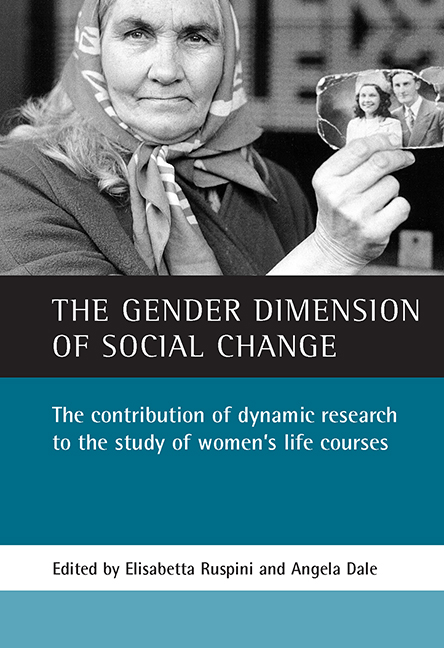 The Gender Dimension of Social Change
The Gender Dimension of Social Change eleven - Concluding comments
Published online by Cambridge University Press: 20 January 2022
Summary
The chapters in this book have used a dynamic perspective to move forwards our understanding of how women’s lives are evolving and in what direction, and how the gender dimension of the system of social inequality is changing. They have also linked the micro- and the macro-elements of such changes in a comparative perspective.
Social change has dramatically altered women’s lives in a number of closely linked ways, such as:
• The effects of increasing education on postponement of maternity and family formation processes, and the role of education in influencing labour market participation (Gustafsson, Kenjoh and Wetzels, Chapter Four).
• The long-term impact of childbearing on women’s lifetime earnings (Joshi and Davies, Chapter Six).
• The consequences of relationship dissolution for women (Dewilde, Chapter Five).
• Gender differences in the impact of precarious employment on young people, and its association with unemployment (Kurz, Chapter Seven).
• The effect of changes in employment, and in particular the large growth in self-employment, on women’s lives. Self-employment, as far as employment law and regulation are concerned, is indeed more vulnerable than employee status (Dex and Smith, Chapter Eight).
• The relationship between human capital and social capital on participation in the labour market, and on the gender wage gap (Sugihashi and Dale, Chapter Nine).
It is important that the study of the individual life course should not ignore the broader context in which it is embedded. In this volume the authors have discussed the role of macro-change (for example, equal opportunities policies, extending higher education, and redistribution policies), and its impact on women in terms of gender inequalities. For example, Gustafsson, Kenjoh and Wetzels looked at the role of education in influencing the timing of motherhood – differences between countries became apparent that suggest that there are institutional factors that mediate this influence. As Mayer and Tuma state (1990, p 3), “the life course is shaped by, among other things, cultural beliefs about the individual biography, institutionalised sequences of roles and positions, legal age restrictions and decisions of individual actors”.
The empirical results sustain our initial position: that women are probably the most important actors of social change. They have seen their patterns of life and expectations change more fundamentally than those of men. Moreover, their risk of poverty has diversified since the patterns of social exclusion have multiplied.
- Type
- Chapter
- Information
- The Gender Dimension of Social ChangeThe Contribution of Dynamic Research to the Study of Women's Life Courses, pp. 261 - 268Publisher: Bristol University PressPrint publication year: 2002


